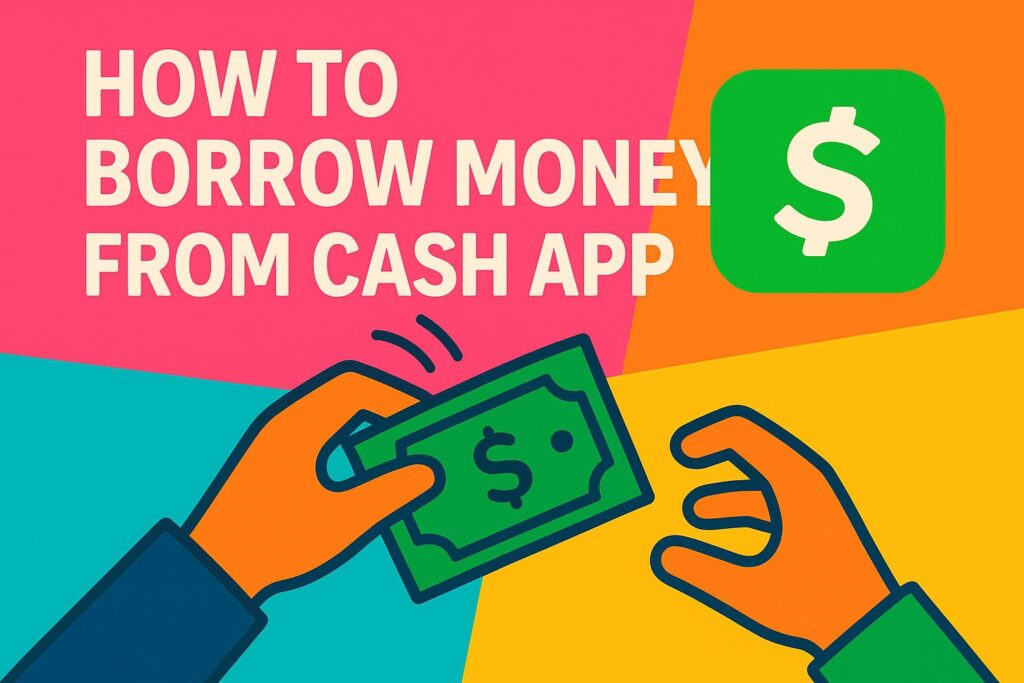Ever had one of those moments where your wallet’s crying, payday’s still a few days away, and something unexpected pops up? Maybe your car suddenly decides it doesn’t want to start. Or a bill you forgot about shows up like a surprise guest. If you use Cash App, you might’ve heard there’s a way to borrow money directly through the app. Yep, it’s real. And for some people, it can be pretty handy.
Let’s break it down step by step.
First, what is Cash App Borrow?
Cash App has this feature called Borrow, which basically lets some users take out a small, short-term loan. Think of it like a quick cash advance, not a full bank loan. The amount usually ranges from $20 to $200. Sometimes more, but not for everyone.
Here’s the catch, though—it’s not available to all users. Cash App decides who gets access based on things like your account history, usage, and credit. So if you open the app and don’t see the Borrow option, don’t panic. You might just not qualify yet, or it’s not rolled out in your area.
Check if you have the Borrow feature
This part’s simple:
- Open Cash App.
- Tap your profile icon in the top right corner.
- Go to “Borrow.”
If you see it, nice—you’re eligible. If not, you’ll probably get a message saying the feature isn’t available for your account. Sometimes people get access later after using the app regularly for a while.
I’ve seen folks get it after months of using Cash App for direct deposits and sending money often. So it’s kind of like they’re testing trust over time.
How to borrow the money
If you’re lucky enough to have the option, here’s what to do:
- Tap Borrow.
- Cash App will show you the amount you can borrow. Pick how much you want.
- Read through the loan terms. Seriously, don’t skip this part. It’ll tell you the repayment date, fees, and interest.
- Accept the terms and confirm.
Once you’re done, the money usually shows up in your Cash App balance almost instantly. It’s pretty quick.
The repayment is usually automatic on the due date. Cash App will pull it straight from your balance or linked bank account. So make sure you actually have the funds there when the time comes. If you miss the payment, you could face late fees, and it might affect your ability to use the Borrow feature in the future.
Fees and interest (read this carefully)
Cash App Borrow isn’t free money. There’s usually a flat fee or some interest added, depending on the amount you borrow. It’s not crazy high compared to payday loans, but it’s not exactly cheap either.
For example, borrowing $100 might cost you a few dollars in fees if you pay it back on time. But if you’re late, it adds up. This is where some people mess up—they borrow thinking “I’ll deal with it later,” and then later turns into a headache.
So only borrow what you’re confident you can pay back. Think short-term fix, not long-term solution.
What if you don’t see Borrow?
If the Borrow option isn’t there, a few things might help over time:
- Set up direct deposit into Cash App.
- Keep your account in good standing (no negative balances).
- Use it regularly for sending or receiving money.
- Update the app to the latest version.
Even then, there’s no guarantee. Cash App rolls out Borrow slowly, and not everyone gets it at the same time.
A quick reality check
It’s nice that this feature exists, but borrowing money through an app shouldn’t become a habit. It’s meant for short, unexpected gaps—not for covering regular expenses all the time.
If you find yourself needing to use it constantly, it might be worth looking at your budget or talking to a financial advisor. I know that sounds boring, but repeating short-term loans can snowball fast.
Wrap up
Borrowing money from Cash App is pretty straightforward if your account qualifies. Open the app, check for Borrow, pick your amount, accept the terms, and boom—it’s in your balance. Just remember it’s still a loan, so treat it like one.
If you use it smartly, it can save you in a pinch. If not, it can become a hassle. So be wise with it.
And hey, maybe keep a little emergency stash somewhere next time. Future you will thank you.
Also read:




